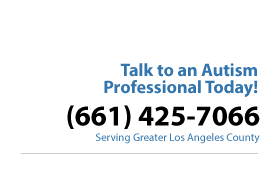Early Childhood Autism
“I cannot take it any longer! We are moving back to India,” said Riya’s mother with a look of utter frustration.
Five-year-old Riya had been diagnosed with Autism Spectrum Disorder (ASD) two years prior, and this news created major chaos within her family. Riya was not responding to anyone; in fact, she was isolated in her own world. She would not make eye contact with her parents, and she showed no emotion toward her family members.
CHALLENGES
Riya was exhibiting challenging behaviors that are commonly attributed to ASD. She did not communicate using language; rather, she simply screamed and made unintelligible sounds. She engaged in disturbing tantrums, aggression, non-compliance, defiance, and elopement. Riya had toileting accidents many times per day. She exhibited these challenging behaviors in the home, school, and community settings. Several attempts had been made to assist Hannah both in the home and in the school. Nothing worked. The family dynamics were quickly thrown into turmoil.
FAMILY STRESS
The couple’s first child was much anticipated, and both parents had big dreams for their baby. Little did they know that five years later, their unity and harmony would be disrupted. They sought assistance from the school and the regional center, and they worked with an agency that provided speech therapy and behavioral services. Still, Riya’s screaming and aggression continued.
In fact, as Riya grew, her tantrums and other challenging behaviors worsened. The whole family was suffering, and Riya’s parents felt powerless. Riya’s parents were communicating less and less, and their relationship was deteriorating. Eventually, Hannah’s father chose to distance himself from the family. His work hours were gradually extended. In his own way, he was as frustrated and overwhelmed as Riya’s mother. At this point, Riya’s mother was the sole caregiver. Riya was five years old at the time.
APPLIED BEHAVIOR ANALYSIS (ABA) SOLUTION
Riya was referred to Vista, and we developed an ABA treatment plan to help her. We first conducted a functional behavioral assessment and made a recommendation for behavioral services. The training strategy selected for the family was Discrete Trial Training with a major emphasis on parent training.
The family received services Monday through Friday. At first, Riya’s mother was hesitant and unreceptive, claiming that past attempts to help Riya and the family had failed. But Vista’s team encouraged Riya’s mother to actively participate and her participation in the training contributed greatly to Riya’s progress.
In additon to treating other behaviors, Riya’s receptive and expressive communication deficits were addressed during the early stages of treatment, which resulted in significant communication improvements. She started pointing, gesturing, and making distinguishable sounds. We were able to build on these early wins that contributed to improvements in other areas.
RESULTS ACHIEVED
- Goal 1: A Decrease in Challenging Behaviors
The increase in Riya’s communication skills likely led to a decrease in challenging behavior. Riya’s screams, tantrums, and aggressive acts were not effective for Riya in getting things that she wanted. Instead, Riya was taught appropriate ways to request and protest. The challenging behaviors soon were greatly diminished while replacement behaviors were taught.
- Goal 2: Optimism toward the Future
Through the use of visual aids, Vista’s team successfully taught Riya to respond with the names of her father and mother. One day, Riya’s father came home early from work. Riya’s mother worried that he might not want to stay, because a treatment session was taking place. As Riya’s father entered the room, the behavior interventionist picked up a photo and asked Riya, “What is the name of your father?” Riya did not respond to the question immediately; instead, she ran to hug her father and said, “Aadi!” For the first time in a long time, Riya’s father was happy. He hugged her back and told her that he loved her. There was a tear in Riya’s mother’s eye.
ONE YEAR LATER
Now, one year after treatment began, Riya is using complete sentences. For example, she can say, “I am done,” “I need help,” and “I love you.” She does so without aggression and without engaging in tantrums. She is toilet trained. The family environment has changed, and there is now tranquility and peace. Both parents are actively engaged in Riya’s treatment program. The family is beginning to communicate more and appear to be united once again.
Riya’s challenging behaviors have decreased in the school setting as well. Her teachers no longer send negative notes home, and they report that Riya is communicating, playing, and engaging socially with her peers. Riya’s communication skills have also extended to the areas of reading and writing.
FOLLOW-UP
Riya’s mother is optimistic that her child will be all right. She is grateful to the Vista team for all the work they have done with Riya. She said, “Thank you. Now there is harmony in my family.” These types of results and parent appreciation motivates our treatment teams, and all our staff to continue to work hard for every family we serve.


